Over two hundred descendants of the Alter Rebbe assembled for their annual melaveh malka on Motzei Shabbos, in close proximity to his 209th yahrzeit on Chof Daled Teves, to celebrate his life, teachings and nigunim.
Over two hundred descendants of the Alter Rebbe (“tze’etzoim”) assembled for their annual melaveh malka on motzaei Shabbos, in close proximity to his 209th yohrtzeit Chof Daled Teves, this coming Tuesday. The attendees included Chabad Chassidim, members of other Chassidic groups, as well as members of the Litvish community, all united with the great privilege of numbering among the Alter Rebbe’s descendants.
As the participants trickled in the chairman Rabbi Shmuel Butman, began his remarks with a milsa dibdichusa –light word– that “never grows stale,” namely, that the meyuchasim come late to every event. However, it doesn’t become stale, because the meyuchasim become bigger meyuchasim every single year!
Dvar Malchus
The MC, Rabbi Butman—chairman of the Association of the Descendants of the Alter Rebbe, and director of the Lubavitch Youth Organization—noted that the Rebbe paid much attention to this gathering over the years. On Shabbos Va’eira 5744, the Rebbe not only gave a bottle of mashke for the gathering, but dedicated an entire sichoh to discussing the “tze’etzoim.”
In that sichah, the Rebbe focused on the nusach of the bracha we recite every morning . In contrast to other versions which state “May we, our descendants, and the descendants of our descendants,” the Alter Rebbe includes only “May we and our descendants.” The former version limits itself to only three generations, while the term “our descendants” on its own includes all future generations.
We thus see something mindboggling and heartwarming: The Alter Rebbe put all of his descendants, including his successor the Mitteler Rebbe, in one word “vetze’etzoeinu.” Thus, all of the Alter Rebbe’s descendants throughout all the generations—the Mitteler Rebbe included—are referred to in one and the same word!
Rabbi Butman reminisced about the origins of the melaveh malka. “The idea came up amongst ourselves to make some sort of gathering, and for several years we arranged a melaveh Malka before Chof Daled Teves. But it involved much time and effort so after a few years we stopped making it. R’ Mordechai Halperin from Tzefas was visiting one year in Teves and asked around if there is any melaveh malka. No one said that there is. So he sat down and wrote a letter to the Rebbe that he came to New York and expected something to be held for the tze’etzoim—but there was nothing! The Rebbe responded to him that he should ask me to arrange a gathering, and the Rebbe added “And with an excuse he wouldn’t get out of it—even if it would be a true excuse.” “Since then” he concluded, “B”H, we have it every year and this is the right time and place to thank the Rebbe as it is due to the Rebbe that we are gathering here this evening.”
Alter Rebbe’s Nigunim
The Alter Rebbe teaches that a nigun enables a person to rise above and transcend any limitations they may find themselves in. At this point the descendants sang three of the Alter Rebbe’s ten nigunim of the Alter Rebbe: Keili Atoh, Avinu Malkeinu, and K’ayol Taarog.
They were led by Rabbi Yosef Zirkind with his sweet and pleasant voice. He is singing in honor of his father Rabbi Yitzchok Zirkind z”l—son-in-law of Rabbi Yitzchak Dovid Groner z”l. Rabbi Yitzchok Zirkind would attend the Melava Malka regularly And Rabbi Yitzchok Dovid Groner would address the descendants when ever he was in the United States.
Accompanying music was played by the renowned musician Choni Milecki, whose grandfather R. Elchonon Marasow, whom he is named after, was personally tought by the Rebbe Rashab the ten nigunim composed by the Alter Rebbe.
“A Special Obligation”
The first speaker was a steady attendee of the melaveh malka, Rabbi Shem Rokeach, whose mother’s mother is a sister to the gaon R. Boruch Shimon Schneerson, a descendant of the Reb Yosef Yitzchok of Avrutch, son of the Tzemach Tzedek.
He began by expressing a tremendous hakoras hatov to Rabbi Butman who invests much time and resources in many holy projects, and especially the annual melaveh malka. He also made special mention of Rabbi Leibel Groner, a”h, who would attend the gathering every year, and surely continues with his holy work of being meshamesh the Rebbe.
On a lighter note, he mentioned that his newest granddaughter, born on 8 Teves, was named Chaya Mushka after the Rebbetzin. Afterwards, his realized that 8 Teves is also the yohrzeit of the Tzemach Tzedek’s rebbetzin Chaya Mushka. He recalled that when his younger sister Shterna was born, his father went to the Rebbe, and the Rebbe told him that “We deserve a mazal tov.” It brought much delight to the Rebbe that she was named after the Alter Rebbe’s rebbetzin.
The Rebbe wanted the Tze’e tzoim to attend Melava Malka.
“When I was a child, probably in 5736-7, the Rebbetzin called my grandmother and said that the Rebbe asked her to call with a request that the eineklach should come to the gathering of the tze’etzoim, adding that ‘it’s important, appropriate, and a good thing.’ We saw that it was important to the Rebbe that we all come.”
Rabbi Rokeach discussed different areas in which we could strive to somewhat emulate the Alter Rebbe. He concluded by pointing out, “What does it mean to by an einekel of the Alter Rebbe? Scientists have discovered DNA, in which you could see where a person comes from. We all have DNA from the Alter Rebbe, and when we do a mitzvoh—it’s the Alter Rebbe who is doing the mitzvoh with us. Not only is he doing it with us, but I believe that it is a special obligation for us to do more and lead by example.”
At this time, three more nigunim of the Alter Rebbe were sung: Likras Shabbos, Tze’enoh Ure’onah, and Kol Dodi.
Ahavas Yisroel and Humility
Next to speak was Rabbi Tzvi Telsner, Rov of Chabad community in Melbourne, Australia. He recalled coming to the early gatherings, when it was very rare that someone was able to actually visit the Alter Rebbe’s Tziyon in Haditch. “After the Iron Curtain opened up, it was the first time I went. Physically, it was desolate, but it was a very uplifting experience.”
Rosh B’nei Yisroel
Next speaker, Rabbi Shlomo Besser, son of the famous askan Rabbi Yechezkel Besser z”l. He is a grandson of the chossid Rabbi Dovber Ludmir, who was a grandson of Rebbetzin Menucha Rochel, the daughter of the Mitteler Rebbe.
He mentioned the importance of repeating stories with accuracy from substantiated sources, and noted that he tracked down a recording of someone repeating the following story from what he heard first-hand from the individual with whom it happened.
This individual grew up in an assimilated family in France, knowing nothing about Yiddishkeit. His father did not go to shul even on Yom Kippur. Several of his siblings intermarried, and when he was 25, he met a non-Jewish woman, and they made up to get married in six months’ time. In the meantime, they found an apartment in Paris where they would stay together. When he entered the apartment with her, he suddenly felt a depression and nervousness. He excused himself, left the apartment and began running down the streets of Paris.
He happened run by a shul. The door was open and he walked in. The Rabbi of the Shul walked over to him and asked him what does he need. He told the rabbi that he wants to pray. They were davening mincha, and the rabbi gave him a siddur with French translation and showed him what to do. When they finished, he ran back to the apartment and told the woman to leave. He took her belongings put them outside the apartment and locked the door to the apartment.
For the next month, he couldn’t sleep at night. There was something about the apartment that made him feel very uneasy. He therefore paid up for the six months, left and went to Eretz Yisroel. He wound up in Tzefas and became a Breslover. Eventually, he got married and built a Yiddishe mishpochoh.
Years later, he saw a flyer inviting the French-speaking crowd to an evening with the Rebbe. On the other side, he saw three addresses where the Rebbe lived in Paris One of them was the address of the apartment that he rented!
He wanted to ask someone if this has a connection to the Rebbe. He did not want to ask a Lubavitcher as his opinion would be predictable. Looking for a “neutral” view on this, he went to ask R. Dovid Abuchatzera, from Nahariya, who told him that “Rebbe is an acronym for Rosh B’nei Yisroel –Hea of the Jewish People. Whatever happens with the body—the head feels. The Rebbe took this apartment in advance not because he needed a place to be and the Rebbetzin needed a place to be, but, indeed since the Rebbe knew that about sixty years later there would be a Yid who would have a nisayon! (a test).” Indeed a Baal Shem’ske Ma-aseh” – A Baal Shem Tov-like story.
The attendees then sung three more nigunim of the Alter Rebbe: Bnei Heicholo, Nigun D’veikus for Rosh Hashonoh, and Nigun D’veikus for Shabbos.
“Taste and See How Hakadosh Baruch Hu Is Good”
A new speaker at this year’s gathering was Rabbi Naftoli Citron, Rav of the Carlebach Shul in the Upper West Side. He is a grandson of R. Eli Chaim Carlebach, a twin brother of R. Shlomo Carlebach, and a great-grandson of R. Schneur Zalman Schneerson who was the fifth generation “ben achar ben” — son after son– to the Rebbe the Tzemach Tzedek.
His grandmother, Rebbetzin Hadasa Carlebach was also present at the gathering. Rebbetzin Carlebach asked Rabbi Butman to mention that she remembers how when Rabbi Yitzchok Groner would speak, he would get even the women to be quiet.
Rabbi Butman said that he must confess but he does not have the power of Reb Yitzchok Groner… but he will make the announcement…
Guess what…
Rabbi Citron mentioned that he is teaching Gemoro b’iyun to his baalei batim, and they are going through maseches Brochos. His favorite pirush on the masechta is Chelek Alef of the Alter Rebbe’s Shulchan Aruch. “In the Alter Rebbe’s language, you see the origins of the Brisker chakiros. Which means that the world famous “Brisker Derech” – the Brisk way of learning with sharpness, depth and profundity did not originate in Brisk, it originated by the Alter Rebbe in Shulchon Oruch.”
“The Alter Rebbe believed that you need to explain how to love Hashem—‘Taste and see how Hakadosh Baruch Hu is good.’ I was once visiting someone who claimed to be an atheist, but he liked to talk. We discussed what Chassidus explains about the Olamos, from Chochma d’Atzilus to Malchus d’Asiya. After a couple hours of discussion, he said, ‘That I believe in!’ It was the concept of Hashem that he heard until then that he didn’t believe in.”
Rabbi Citron also mentioned that at one point, the Alter Rebbe sent a letter to the Vilna Gaon, offering that the Vilna Gaon should send all his complaints in writing, and the Alter Rebbe will respond to each of them in writing. Then the questions and responses could be sent to the rabbonim of the time and they’ll decide if the complaints are legitimate.
Using Gashmiyus for Ruchniyus
Rabbi Dr. Bentzion Twerski, grandson of R. Bentzion of Bobov,the Kdushas Tzion, Son of famous author Rabbi Abraham Twerski and descendant of the Alter Rebbe addressed the event next. In exploring the piyut of Kamoh Maalos Tovos in the Haggodoh, he noticed that the simple peshat reflects the theme of Chassidus. We say that “sipeik tzorkeinu bamidbor,” Hashem provided our physical needs in the midbor, as mentioned in the pesukim: our shoes never wore out, our clothing was cleaned by itself, and there was a constant supply of water from the well of Miriam. We also say that Hashem fed us the Mon, which was “lechem abirim,” a spiritual food. It satisfied physical hunger, and also elevated the Jewish people to a higher level. Shabbos has a unique feature—we eat the finest delicacies, but the oneg on Shabbos becomes Hashem’s delight, creating spiritual delight for Hashem.
The Frierdiker Rebbe is quoted as having said that the Baal Shem Hakadosh taught us that there is a derech avodoh of using olam hazeh to achieve the madreigos that bring us to olam haboh. The Alter Rebbe taught us how to do it.
Concluding and Beginning Anew
A siyum on the Alter Rebbe’s Shulchan Aruch was made by Rabbi Shlomo Yehuda Segal, a Rov and a Dayan in Crown Heights and descendant of the Alter Rebbe’s son Reb Moshe. He read the final halacha, which discusses the laws of muzzling an animal while it is working. The Alter Rebbe rules that if one is taking muzzled animals from place to place, even if they tread upon grain and it gets threshed, he isn’t liable for muzzling them. This is because it was not his intention for them to thresh the grain. The Alter Rebbe concludes that the same applies in all similar situations.
We see from the Alter Rebbe that the exemption due to lack of intention applies to all Torah prohibitions and not just by the prohibition of muzzling (as some poskim hold).
In a siyum that the Rebbe made on the Alter Rebbe’s Shulchan Aruch, the Rebbe pointed out that by issurim, a lack kavonoh exempts the person. But by a mitzvoh, you are yotzei even without kavonoh! This is because a Yid has a neshomoh, and even if outwardly the Yid doesn’t seem to have kavonoh, his neshomoh deep down wants to serve Hashem.
Rabbi Segal made mention of R. Yoel Kahan whos’s wife Rebbetzin Leah Kahan is from the tze’etzoim. R. Yoel related:
In the Alter Rebbe’s times, there were “shluchim” to be makarev Yidden to Chassidus. One of them was named R. Leib, and he had a group of talmidim to whom he taught the Alter Rebbe’s Torah.
One of these talmidim, who belonged to a different Chassidic group, was challenged by his friends that mofsim were found to a greater extent by other Rebbes. He didn’t discuss this with his teacher R. Leib, but it bothered him. When R. Leib wrote a duch to the Alter Rebbe, the Alter Rebbe made a note by this talmid’s name and wrote, “It is fitting to inquire about this talmid’s situation, and this will be for him an ‘os’ (sign) and for others a ‘mofes’ (wonder).”
R. Leib called in the talmid and showed him the note. He then asked him, “Do you need a greater mofes than this?” He then explained what mofes he was referring to—“Until now your brain only understood sugyos in Gemoro regarding bartering a cow for a donkey, and now you understand what a neshomoh is!”
Rabbi Michoel Seligson, an author and mashpia, son of the Rebbe’s doctor R’ Avrohom Aba Seligson z”l, a descendant of the Alter Rebbe, began the study anew by reading the first halacha, which begins, “Yehuda ben Teimoh says….”
The Rebbe asks in a sichoh, why is it necessary from a Halachic perspective to quote who said it? The Rebbe explained that it all starts with Yehuda – bittul. “Ben teima” – everything he says is devar Hashem. The Rebbe also brought out the positive aspect of azus – “az kanomer.”
Rabbi Seligson related that in 5749, after his father’s passing, the Rebbe instructed that the tombstone include his lineage tracing back to the Alter Rebbe.
Rabbi Seligson also related that the Rebbe told R. Yitzchok Pupko, a son-in-law of Reb Moshe Schneerson-Twerski fourth generation “ben achar ben” – son after son—of the Alter Rebbe: “Nothing will help, it’s too late. The children already have the Alter Rebbe’s blood in them…”
A Pan to the Alter Rebbe
At this time the chairman announced that The Frierdiker Rebbe said that singing the Alter Rebbe’s nigun of Arba Bovos is sending a Pan (personal petition) to the Alter Rebbe. The highlight of the gathering is when the tze’etzoim sing this nigun together. First they sang the Nigun Hachonoh, then the Alter Rebbe’s nigun, followed by Nyeh Zhuritze Chloptzi.
The atmosphere in the room changed. The Tze’etzoim are connecting with their grand father the Alter Rebbe in serenity and dedication as they are elevated to a world of refinement and spirituality.
Division of the Shulchan Aruch
As customary, the Alter Rebbe’s Shulchan Aruch was divided amongst the participants to be concluded jointly during the coming year. Special folders were prepared in advance, each including a part of the Alter Rebbe’s Shulchan Aruch, to be finished by the 24th of Teves 5783. A label on the cover indicated which section of halachos and which chapters are contained in the folder. These were distributed amongst the descendants who each committed to study in depth parts of the Shulchan Aruch written by their ancestor—the Alter Rebbe. As someone remarked, “Each folder contains a unique section that you committed to study. This way, you feel a personal responsibility since if you don’t finish it, the entire collective study will be lacking.”
As a continuation of the division among the descendants, it is now being offered to the community at large, and everyone can participate by signing up at www.AlterRebbe.org and choosing the section they will commit to study. There you can download the relevant pages in PDF format. Throughout the year, reminders will be sent to the participants regarding their commitment. This campaign unites Jews across the globe in the study of the Alter Rebbe’s teachings, and enables the Shulchan Aruch to be concluded multiple times.
Next year in Yerushalayim
Rabbi Butman also made special mention of R. Avrohom Michoel ben Yaakov Shimshon Halevi Flint a”h, who was a steady attendee of the gathering, and whose first yohrtzeit is coming up on 26 Teves two days after Chof Daled Teves. May he be a Gutter better – a good advocate for his wife and his Tze’etzoim in all that they need.
Rabbi Butman announced that the next gathering will Be”H take place in Yerushalayim Ir Hakodesh with the Alter Rebbe and the Rebbe. The tze’etzoim left the gathering with renewed inspiration to live up to their ancestor’s teachings and holy ways.
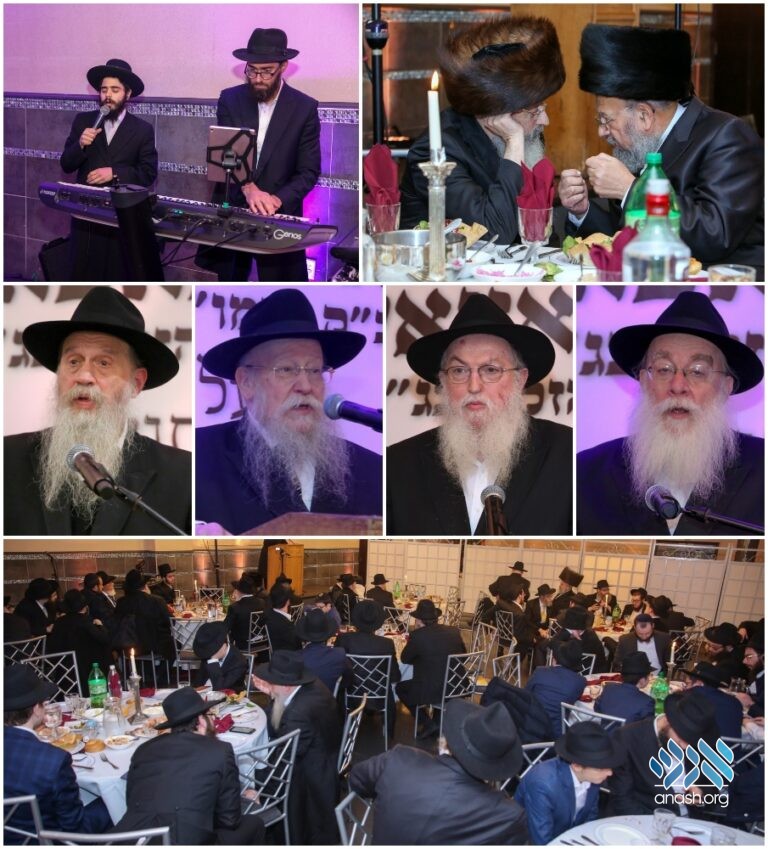

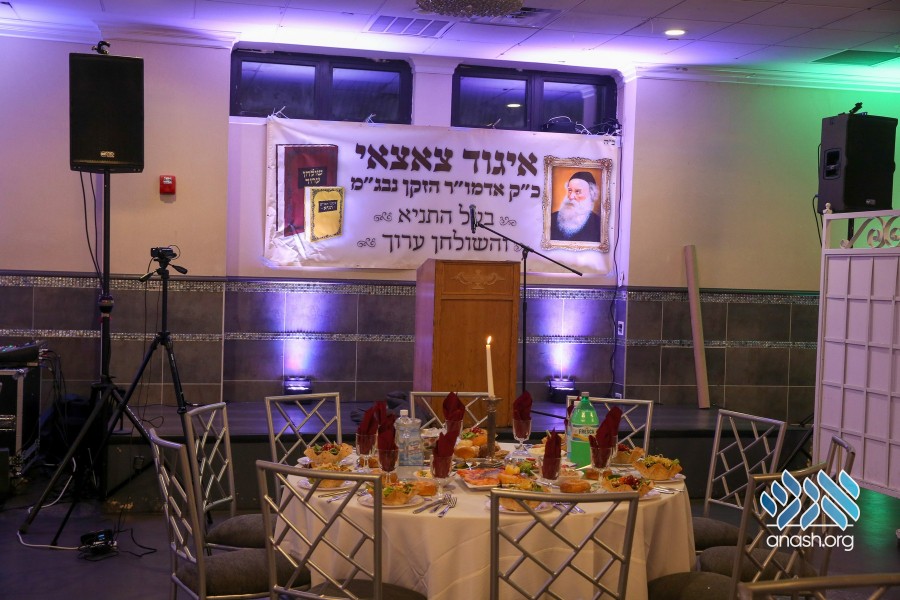
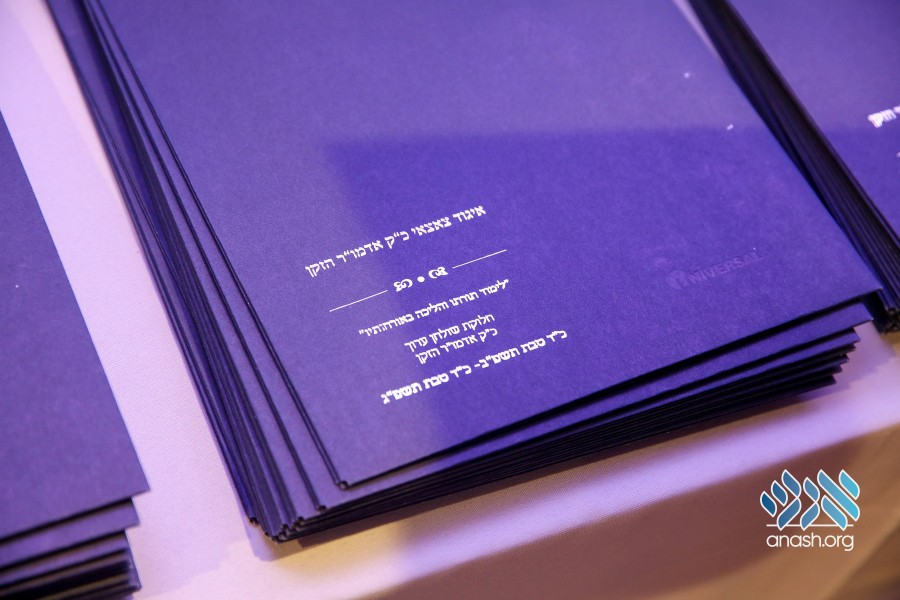
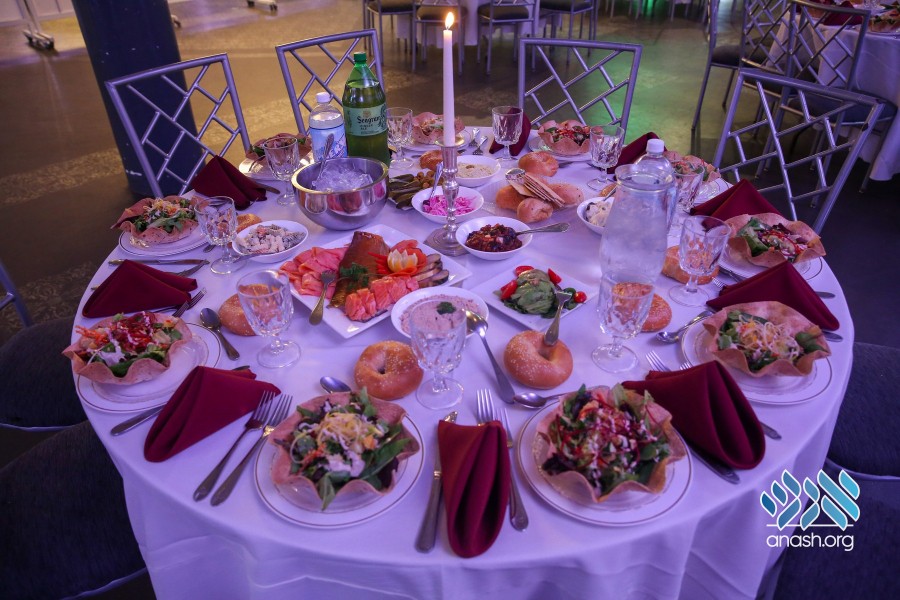

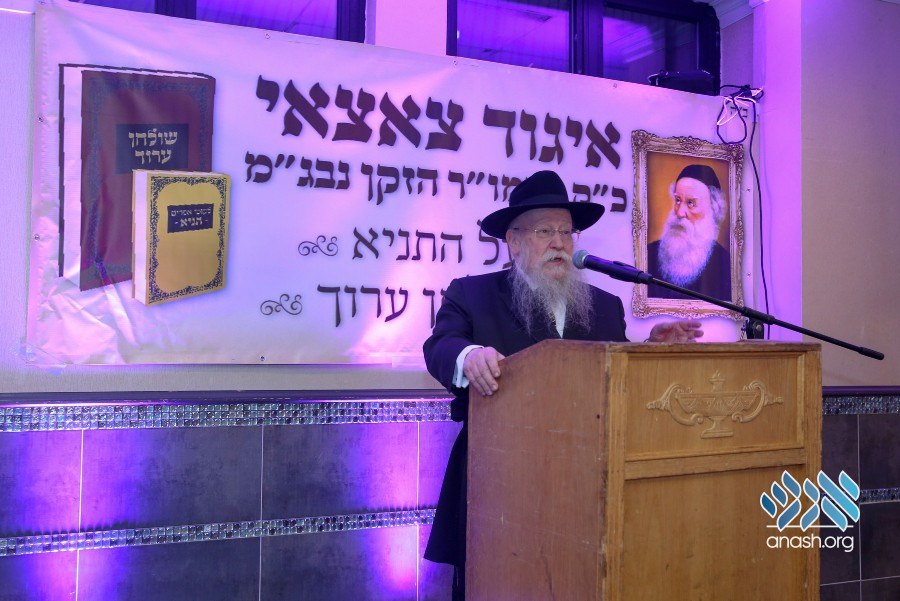

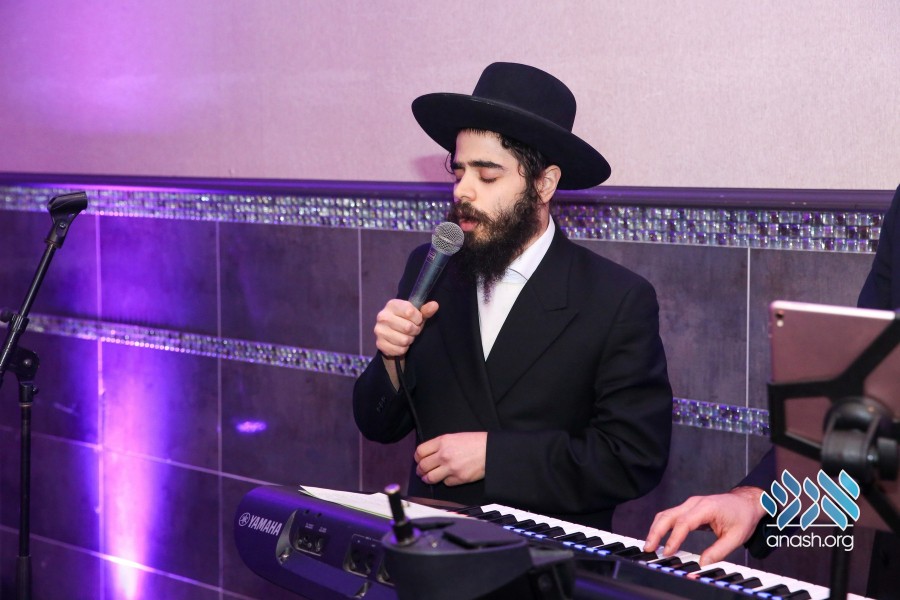

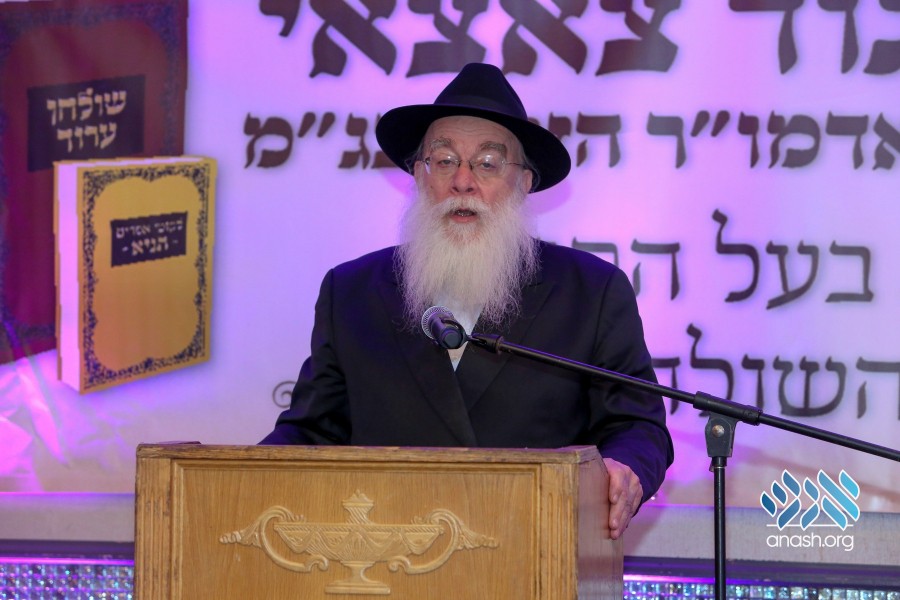

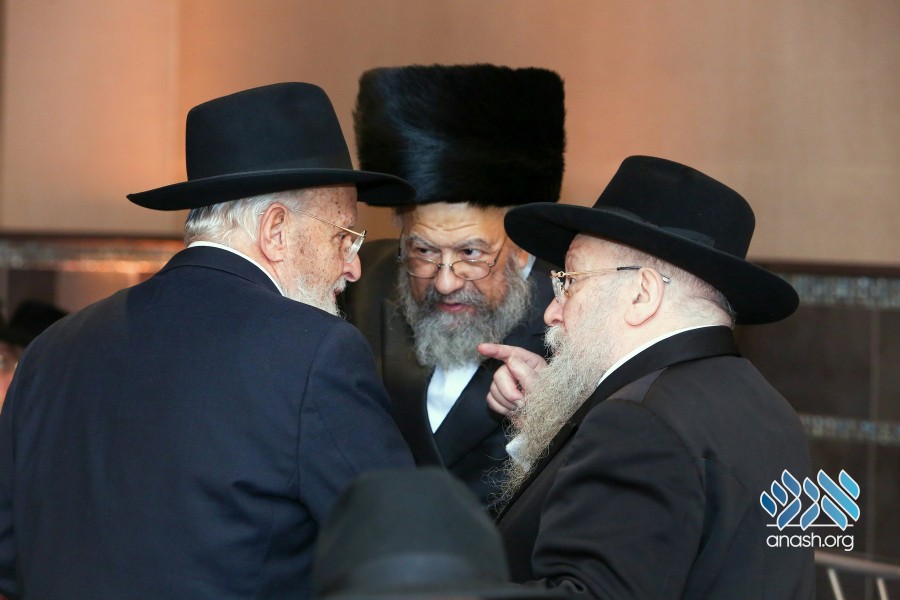

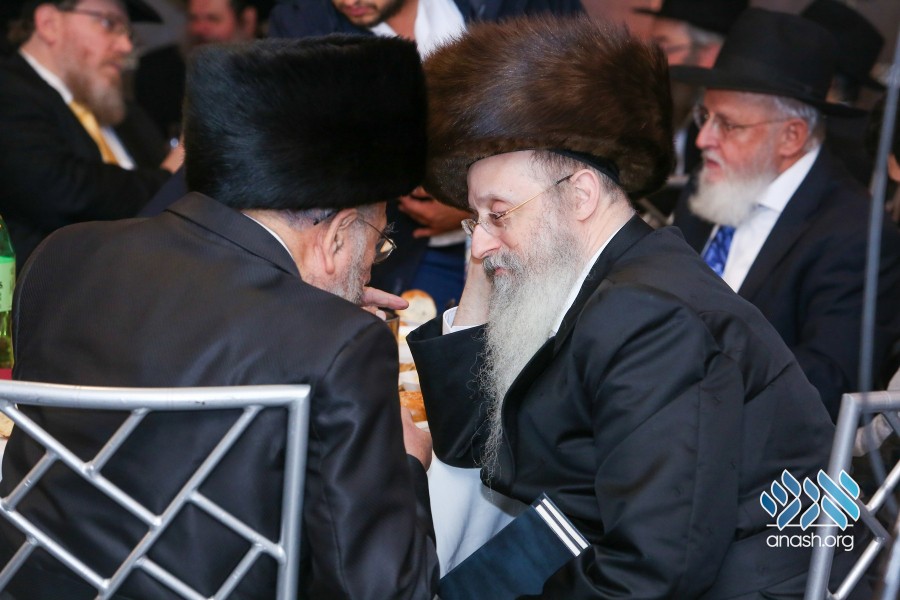

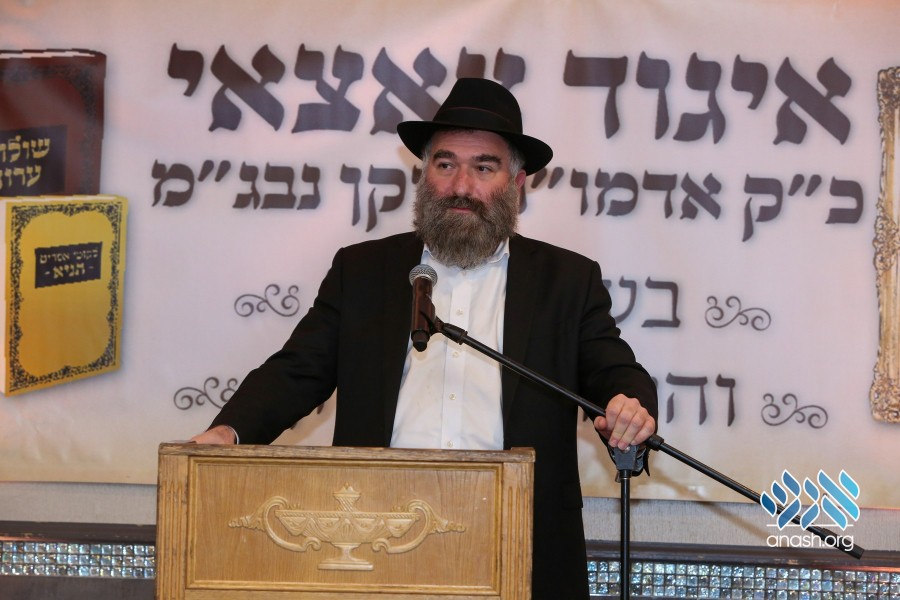
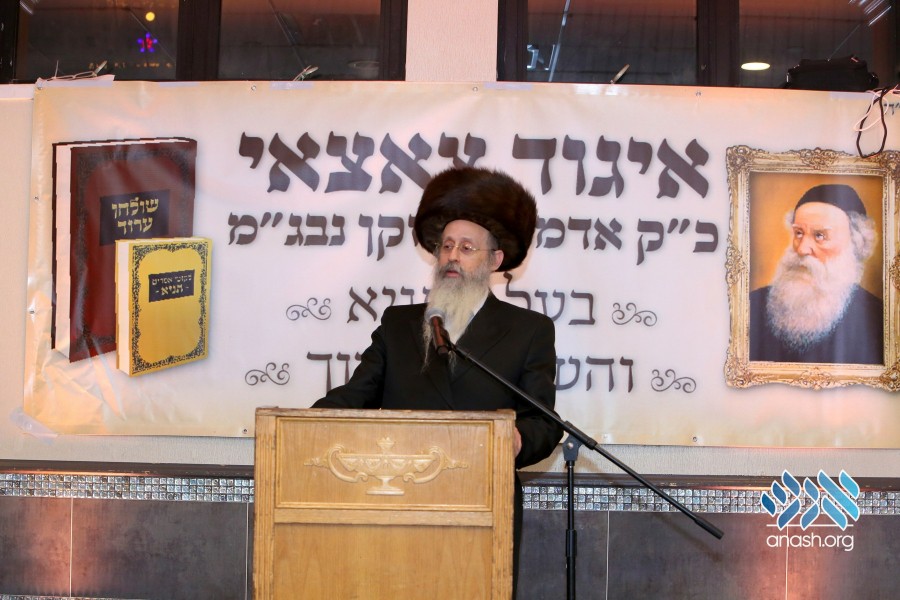

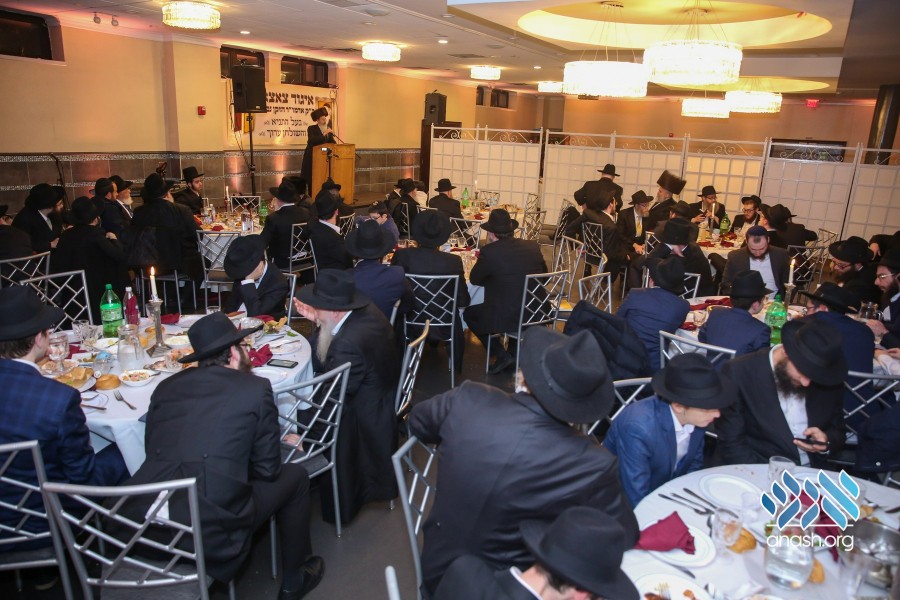
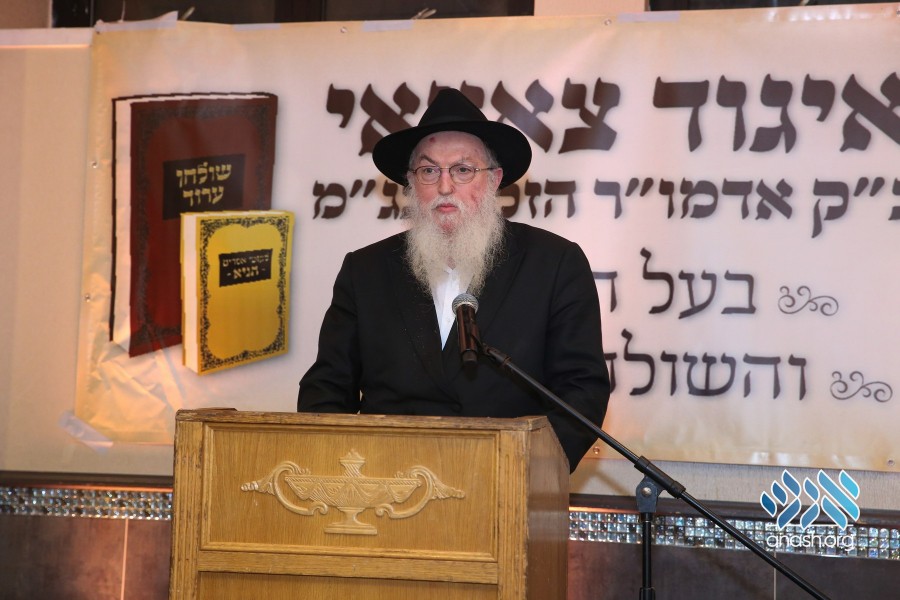
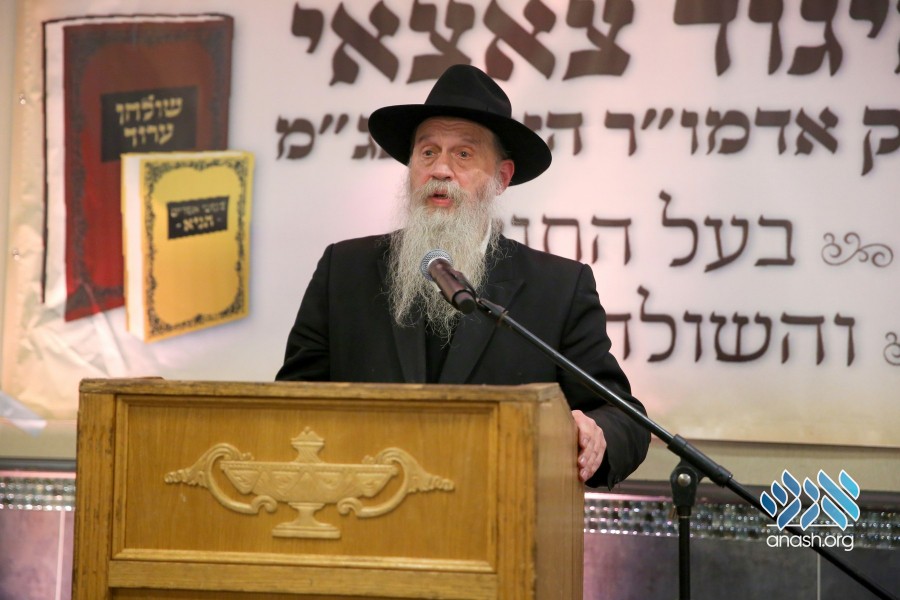
Discussion
We appreciate your feedback. If you have any additional information to contribute to this article, it will be added below.